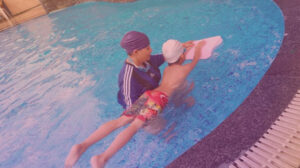INCREASE YOUR CHILDS BRAIN WITH YOGA
The brain is our learning centre and is the seat of all our habits, thoughts, and memories. In order to bring about any kind of transformation in life, it is the brain that we must target first. As an adult, we do realize that from our childhood until today, the major change we have witnessed is the development of brain and thought process. We want children to grow better and have wholesome brain development. For this yoga is important as it works on both the physical body as well the mind. We often ask our children to pay attention. Pay attention to your school work, pay attention to your father, pay attention to your teacher. But we don’t always have a clear idea of what we are actually asking of them. When we ask our children to pay attention, what we really mean is something along the lines of Stop thinking about all the other things that are important to you right now, no matter how you are feeling about those things—even if they are scary or confusing or are trying really hard to distract you. Focus exclusively on what I want you to focus on. Then respond in a way that is productive and socially appropriate.
CHILDS BRAIN WITH YOGA
What we are asking our kids is very hard. In order to pay attention to any one thing, a person must filter an enormous amount of other things: all of the external stimuli (including the ongoing assault of technology), and all of the internal thoughts, feelings, memories, and plans. We are always paying attention to something. What we are trying to do—and teach our kids how to do—is choose what we pay attention to and for how long we pay attention to it. the brain is our learning centre and is the seat of all our habits, thoughts, and memories. In order to bring about any kind of transformation in life, it is the brain that we must target first.
How Yoga works effectively
Yoga is known for being a slow, methodical practice. Parents may wonder if such slow and deliberate movements can really help their kids — especially if the kids are more spirited than average or lack patience. It turns out that the gentle pace of yoga actually has a calming effect on many kids, even kids with short attention spans and a lot of energy. Many yoga programs are specifically developed for children and may incorporate more movement than traditional yoga as well.
How Yoga Helps
Yoga teaches the ability to focus the mind and attention. The focus on learning to control breathing also has a calming effect on students, which can in turn improve performance in school. Students who struggle to focus often have issues with anger and stress. Studies have shown that yoga can make a big difference in managing emotional issues and improving focus. Two randomized trials have shown that yoga can be an effective therapy alternative or addition to other treatments for ADHD.
Yoga and Self-Discipline
Self-discipline is an important component in being a good student. But it’s not a skill that comes naturally, and some kids have more difficulty developing it than others. Yoga practices teach patience and mindfulness, which helps to build self-discipline as well. When students practice yoga poses and combine them with breathing techniques, it creates the ability to focus on tasks at hand. Self-discipline is not a gift that either you have or you lack; it’s a skill that you can cultivate. Yoga just happens to be a fun and relaxing way to do that.
Something new in Yoga for Brain
Some of yoga poses that reminded me of the punishment children often received by teachers in olden days. Any hyperactive, or a naughty child or someone who did not complete his homework received this punishment. The punishment is none other than the famous sit-ups done holding both ears (in Hindi it is called Uthak-Baithak).
An impressive name is being used nowadays for this erstwhile punishment – ‘Super Brain Yoga’. It is a 2 minute exercise and very effected experimentally as well.
What is Super Brain Yoga?
As the name suggest it is a yogic exercise that energizes and sharpens the brain. This yoga is suitable for the entire family as it brings calmness to the personality and improves the ageing signs of the brain. The simple exercise helps the body’s energy centers to absorb, and distribute Prana (the vital life energy) to the different parts of the body – brain, eyes, ears, nerves, mouth, etc. It also gives greater mental composure. Practice it for a week and you’ll start seeing the results. It is a short exercise that will develop the intellect and hone up the skills of a child.
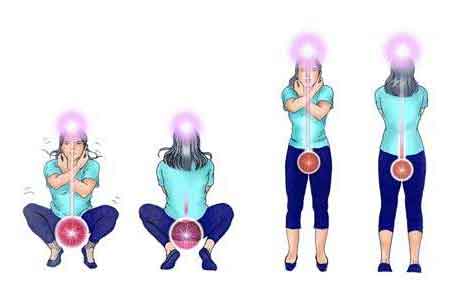
Benefits of Super Brain Yoga
This exercise is said to bring a number of cognitive benefits. There has been noted an increase in educational and social performance, greater class participation and improved behavior in children. The connection between pressing a certain point on the ear and the whole body was long ago recognized by the great rishis (teachers) of India. The same principle is used in Chinese ear acupressure. This simple exercise regimen is beneficial for adults as well, who want their brain to stay healthy and active in their old age.
According to Dr. Eric Robins – “Super Brain Yoga is a fast, simple, drug-free method of increasing mental energy!”
How to Perform Super Brain Yoga?
Let’s learn the steps
- Stand facing east. Both feet a little apart.
- Take your left thumb to the right ear lobe (with the index finger at the back).
- Do the same with your right thumb (hold the left ear lobe with right thumb and index finger at the back).
- Connect your tongue to the palate.
- Squat 20 times (inhaling when you go down and exhaling while you come up).
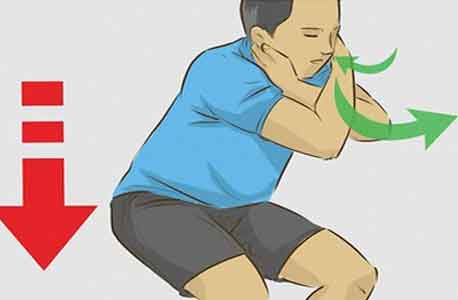
Though it’s recommended twice, but practicing even once every day brings significant results.
Other Yogic Exercises for Brain
Yoga has been practiced in India from ancient times. There are many yogasanas that, if practiced even for a short duration on a regular basis, improves memory and reduces stress. Bhujangasana, Vajrasana, Padmasana, Padhastasana are the simplest and easiest of the asanas that children can playfully perform on a daily basis. The breathing techniques called Pranayams are said to bring about a sense of calmness to the mind. Brahmri Pranayam vibrates the whole brain and has positive effect on ears, eyes, nose and mouth. Nadishodhan Pranayam balances the right and left hemisphere of the brain and helps in cognitive development.
Focus to improve blood flow and balancing the two sides of the brain, it aims to optimise the brain’s capacity. With the help of yoga, we all have the potential to become super containers of knowledge and energy. The special techniques of super brain power yoga it can turn out to be very beneficial for children. By inculcating these practices of asanas, pranayama, and meditation early on, you are boosting the physical and mental development of children. Superbrain power yoga consists of acupressure and breathing techniques that energise and balance both hemispheres of the brain,” told the yoga guru. To reap the benefits of super brain power yoga, Akshar suggested following this particular sequence of these three special yogic practices.
Siddho Hum Kriya
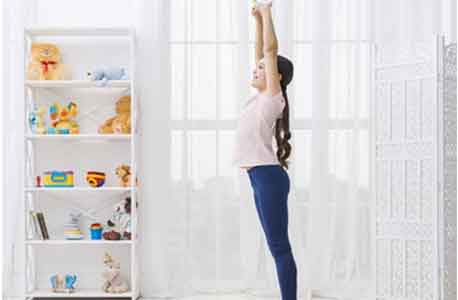
This yogic practice comprises of five brief steps that have to be done facing the east direction of the house. This asana will also de-stress and relax your mind. Siddho Hum Kriya is ideal to perform during sunrise. Hold each step for about a minute.
Samasthithi
While performing the first asana repeat in your mind “I am part of this existence, and I exist eternally in the past, present and the future,” recommended yoga guru, Akshar. Sit and softly inhale, exhale naturally.
Pranam
Bow down to the universe for all your blessings. Stand straight with eyes closed, joining your palms in front of your chest. Gently bow down. Inhale as you join your palms and gradually exhale as you bow down.
Pukar Stithi
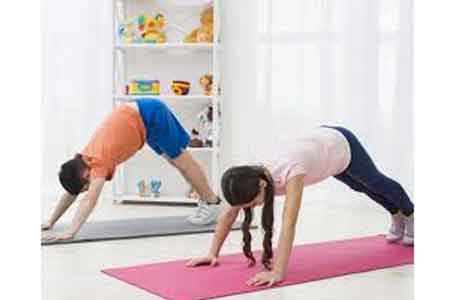
It is a prayer for asking the universe for energy, and knowledge. Stand straight with eyes closed, stretching your arms up straight and spreading them at a 45-degree angle. Turn your palms inward. Inhale as you raise your arms up and continue natural breathing of inhaling and exhaling.
Prapti Stithi
Stand straight with eyes closed. Stretch your arms out forward in front of your chest, turning your palms upward in the shape of a cup or a container inhale and exhale naturally, this is also likely to improve your body posture.
Kritagyata
Offering your gratitude for what you received. Stand straight with eyes closed. Place your palms on your heart. Then, inhale as you raise your arms up and continue the natural breathing of inhaling and exhaling.
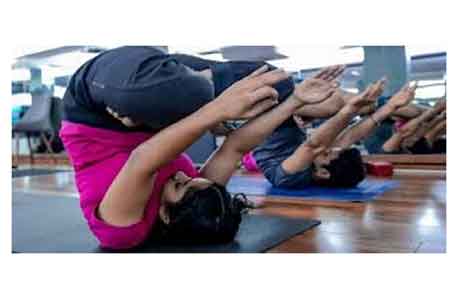
“Silent meditation in self-observation of the experience, offering gratitude for what you have received is vital. So, sit in Sukhasan holding Siddha Mudra, relax your body, continue natural breathing of inhaling and exhale,” said Akshar.
Ganesh Namaskar
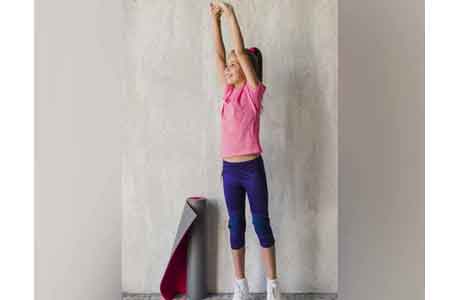
- To perform this yoga stand tall and straight with your arms by your side, lift your right arm, and hold your left earlobe. Your right arm should be over your left arm.
- Lift your left arm and hold your right earlobe with your thumb and index finger. Your thumb should be in front. Exhale deeply and squat down slowly to a sitting position. Stay in this position for 2-3 seconds.
- Now, gently inhale as you rise again. This completes one cycle. You may repeat this for 11 counts X 3 times. It can be performed thrice a day- morning, noon, and night.
Brahmari Pranayama
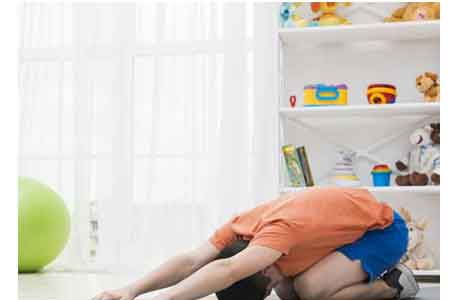
- To start this yogic practice sits in any comfortable pose. Straighten your back and close your eyes. Place your thumbs on the external flap of your ear. Place your index finger on your forehead and remember your middle finger should be placed on the Medial Canthus (corner of the eye where the upper and lower eyelids meet.) and ring finger on the corner of your nostril.
- Now, inhale and fill your lungs with air. Exhale slowly making a buzzing sound likes that of a bee. Close your mouth and feel the vibration of the sound disseminating throughout your body. Begin by practicing this breathing technique for 2-3 minutes a day and gradually increase it.
Benefits of children practicing yoga:
Improves Memory and Attention Span
Practicing yoga encourages children to have a clearer mind and focus on their academic performance and extra-curricular activities. Yoga is also beneficial for children suffering from special disorders like ADHD (Attention Deficit Hyperactivity Disorder) by reducing some of its core symptoms like hyperactivity, impulsivity and inattentiveness.
Healthy eating habit is developed in kids
Yoga helps in developing healthy eating habits in children which helps in maintaining calm and focused mind-set.
Yoga teaches self- acceptance and builds confidence
Yoga allows children to learn and move at their own pace in mastering new poses which helps in building confidence by creating a flow between their body and mind. An added advantage by learning yoga at a young age is incredibly valuable lessons helping to a fight the increasing feelings of self- doubt that a child faces during their teenage and beyond.
Improves balance
Systemic breathing and exercise are an integral part of yoga and balancing both are very essential to achieve its benefits. By practicing this from a young age child becomes more aware of the human system and its functions and also the significance of balancing life through yoga.
Yoga enhances immunity
Children often fall sick due to the lack of immunity in their body. Yoga helps in overcoming it by stimulating the nerves, endocrine, digestive and circulatory systems which enhances their functioning. Some asanas and deep breathing techniques assist in safeguarding one from falling prey to germs causing diseases.
And that all of them are perfect. As Swami Satyananda Saraswati says: “The destiny of the whole world depends on little children. If you want to see the silver lining on the horizon it is not you and me, but children who have to be spiritualized.”
BOOST YOUR CHILDS BRAIN BY BEST YOGA TRAINER IN DHAKOLI
A well qualified and expert yoga trainer can help your child to boost up his/her brain. There are few trainers who understand the exact psychology of kids and give them training accordingly in a very calm manner. Dr. Jyoti Gupta is one of such instructor she is a knowledgeable and experience to deal in such cases because she is Pediatrics Physiotherapist as well as a certified Yoga instructor she complete her course from a well known YOGA ALLIANCE INTER NATIONAL FnY STUDIO. So she always applies her valuable skill from the root of the cause and focus on positive outcome.
With Dr. Jyoti Gupta in Blossom physiotherapy center there are teams of various staff such as, pediatric neuro physiotherapist, occupational therapist, special educators, speech therapist and other assistants work together on child and always come with visible results. The noticeable outcome results make Blossom physiotherapy center different in dhakoli . They also provide friendly atmosphere for the child and parents with the help of that the child become more expressive and various activities and yoga poses performed by kid make his/her brain sharper and intelligent. Yoga additionally enhances behavior of the child and help in make child calm and more productive. So in the end Blossom physiotherapy is prepared to help you in every manner in this pandemic with full of precautions. So I must say that you have to once visit in the clinic you will defiantly attached with the staff and appreciate them. For further information log into blossomphysitherapy.

